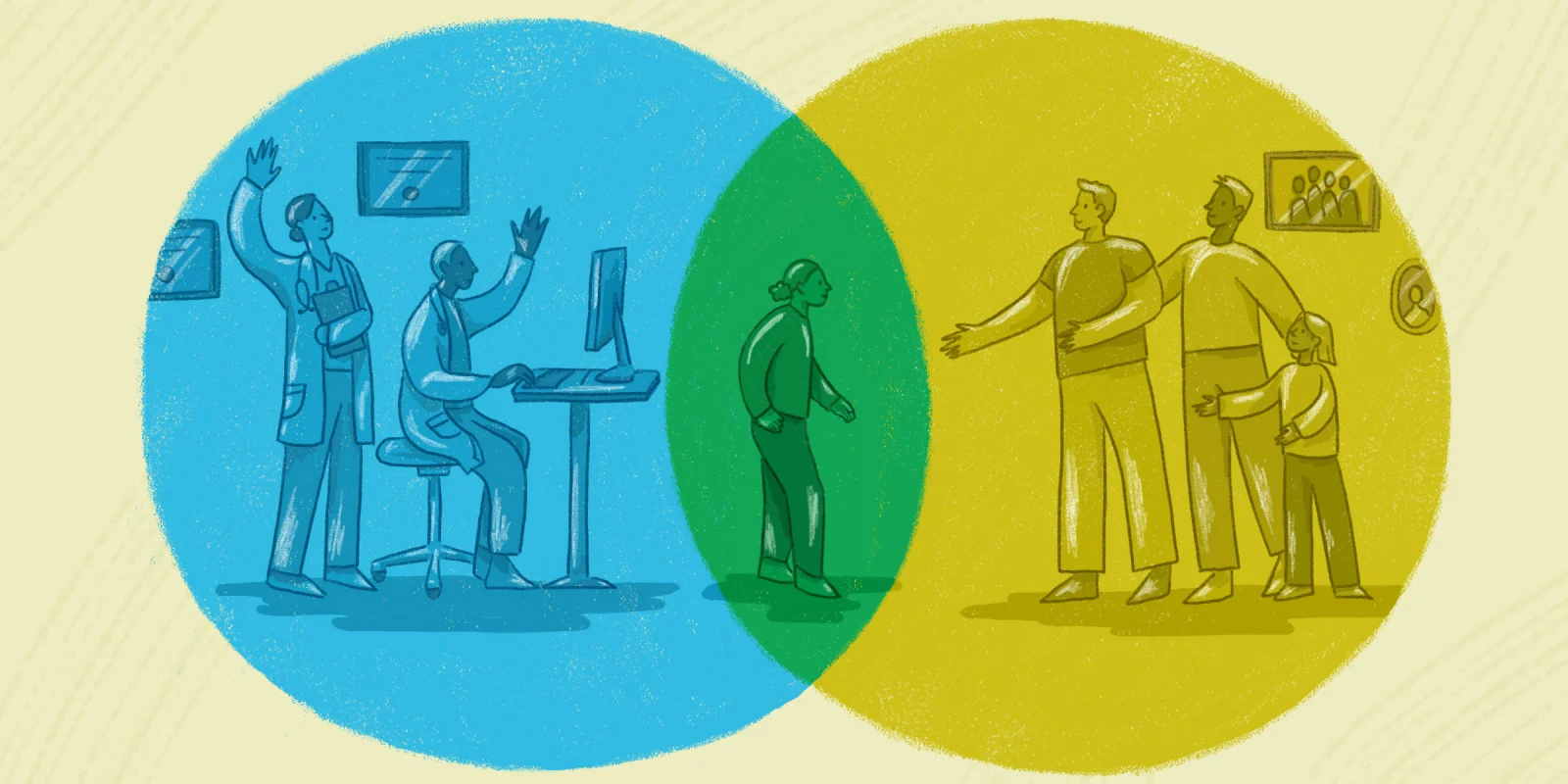It was middle of an ED shift in a local children’s hospital in New Orleans, Louisiana. In my fourth year of medical school and eager to impress on my away rotation, I picked up a chart to see the next patient while my attending was discharging our last one.
When I walked into the bay, the person in front of me didn’t look quite like the picture I had in my head from the chart. Every few seconds, a teenager who appeared as small as a 10-year-old intermittently moved as if twitching randomly, eyes roving, slack-jawed as though not entirely aware or in the present. I was instantly uneasy, unsure how to approach the 17-year-old girl who I quickly realized was non-verbal when I said her name and didn’t get a look of acknowledgment. Her mother, sitting next to her, stated matter-of-factly, “She won’t tell you with words, but she knows you’re there. Tara is pretty smart.”
I began to ask the mom my usual series of questions for gathering a history for the patient’s presentation. When I got to asking about Tara’s medical history, however, I seemed to hit a wall. Her mother suddenly looked irritated, as if I had said something offensive. “Tara has been a patient here since she was little, you should know her history better than me. I shouldn’t have to repeat myself every time we’re here.”
I was taken aback. Not wanting to irritate her further, I replied, “Of course, I’m sorry. I’ve actually never met Tara before, but I can check her chart. Let me just make sure we’re not missing anything from your perspective.” Her demeanor softened just a tad, encouraging me to continue.
Tara had cerebral palsy due to a hypoxic injury to her brain when she was just born, leaving her nonverbal and quadriplegic. She was brought in because she was having fevers, abdominal pain, and vomiting, resulting in her being unable to keep her medications down. During my time examining Tara, I took note of the way her body was different from a typical 17-year-olds, the way her fingers were clenched, and her wrists flexed, how her legs were thin and curled up under blankets in a stiff position. Tara didn’t make any sounds of discomfort when I examined her, but she was persistently tachycardic and sweaty. After precepting with my attending, we tested her blood and urine for infection and gave her IV fluids with the hope that her heart rate would improve. Her mother stayed by her side the entire time, knowing exactly when Tara was uncomfortable or when she needed re-positioning. She produced an incredibly organized list of Tara’s medications, her usual feeding regimen, and a list of the attending specialists who knew her best. She described how Tara behaved when she was happy or in pain. I had encountered devoted parents in the past, but this was a different level.
I learned quickly that day to never take what a caregiver says about their child for granted. Nothing could replace the perspective of the people who spend the most time with their child, no matter how many specialists follow them or how many times they are seen at the same institution for their health care. Tara and her mom were so memorable because I realized how wrong I was about so much. I thought Tara was a young child, not a teenager. I was surprised by her medical history, but I was mostly in awe of the poise with which her mother handled her care. Since medical school, I’ve encountered many families who essentially live within the health care system for one reason or another. Many of them have taught me valuable lessons on how to approach their children who have chronic illness – and unintentionally taught me a lot about their own resilience.
Further in my training, I took care of 10-year-old Kameka multiple times. Kameka had a mitochondrial disorder that affected her nervous system and muscles. When she was re-admitted multiple times for stroke-like symptoms, I would notice her ability to take care of herself declined each time. I once asked her mother what kept her so steadfast and calm despite so many setbacks. Her reply was simple: “When it’s your child, there is no other choice. You can take it one day at a time, but you have to keep taking it. Or else no one else is really fighting for them, not even the doctors.”
From Kameka’s mother, I realized the value in building genuine trust with a family whose child has chronic illness. Without it, any plan you have as a physician for the patient may as well never be proposed. I realized that day that a caregiver not only fights for their child’s medical stability, but also their child’s hopes, dreams, and goals. Although we think as physicians that we are fighting hard for our patient’s lives, the patient and their family are the ones who live that life day-to-day. Instead, we should be fighting hard to support our patients for the goals they and their family have.
One of my most memorable patients, 5-year-old Carter, had his life completely change after being in a car accident. He was now dependent on a tracheostomy and ventilator to breathe and needed tube feedings for his nutrition. Our medical team could not safely discharge him because his caregivers kept missing meetings with the tracheostomy teaching nurses and ventilator company, who would teach them how to take care of him at home. For some time, nobody could reach Carter’s parents, and our team was toeing the line of calling Child Protective Services on his behalf. Perhaps it was from the fear that that his family didn’t have his best interests in mind or were being purposefully absent. It was finally discovered that they were so overwhelmed — with their other children’s needs, with finding childcare so that they could visit Carter, and with filing paperwork for FMLA — that they couldn’t catch their breath to have things in order for his discharge. One evening, his father came to the hospital to visit and admitted he had a difficult time seeing his son, because his vision for Carter’s future had completely shifted in his mind. No longer could he picture his son driving a car or getting his first job. It was also difficult for him to reconcile what happened to Carter with his faith, an internal struggle that wouldn’t abate.
From Carter’s father, I learned that in the same space you talk to caregivers about every medical decision for their child, there must also be room left for grace to process, to grieve, and to regroup. As much as we hope as physicians that our medical disposition plan lines up neatly with a caregiver’s readiness to take their child home, it often cannot for reasons out of anyone’s control. Even more so, coping “well” in the aftermath of life-altering events is subjective, and nearly always non-linear.
I have often heard that one of the stereotypes of pediatricians is that they like kids better than adults. While there’s probably more than an inkling of truth to it, I couldn’t just say that my patients have made me a better doctor now that I’m done with my residency training. Their caregivers have equally taught me to be more patient, compassionate, and mindful of all the moving pieces of a child’s care that I don’t get to see on a day-to-day basis as a physician.
What have you learned from caregivers? Share in the comments.
Dr. Zahur Fatima Sallman is a resident physician in pediatrics at Children’s Hospital of Michigan. She is a graduate of the University of Maryland School of Medicine. She loves acrylic painting, pizza making with her husband, and considers herself an amateur carpenter. Dr. Sallman was a 2022–2023 Doximity Op-Med Fellow.
All names and identifying information have been modified to protect patient privacy.
Illustration by Diana Connolly







